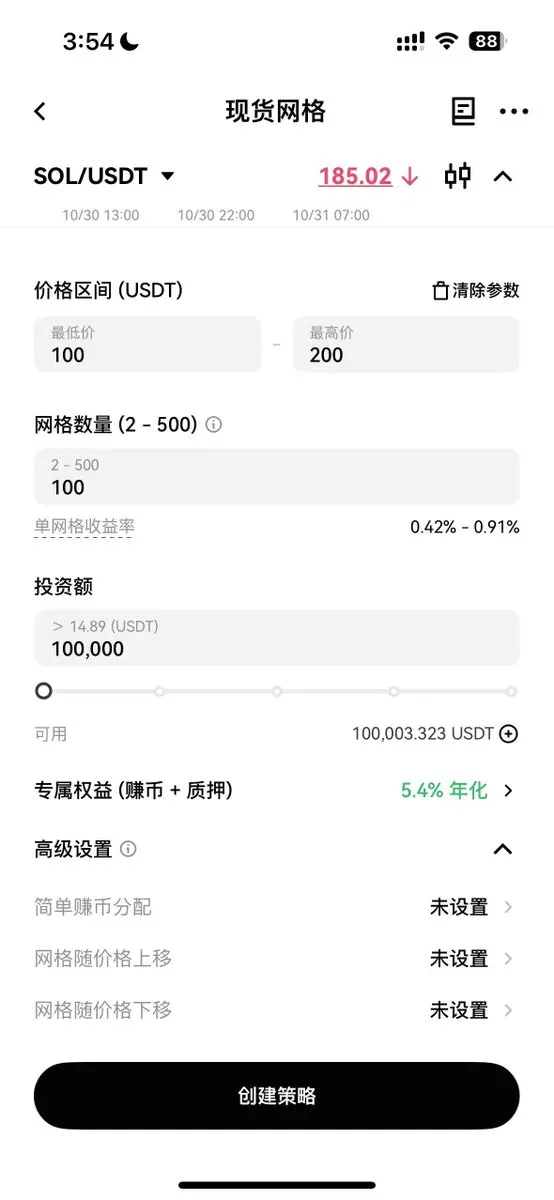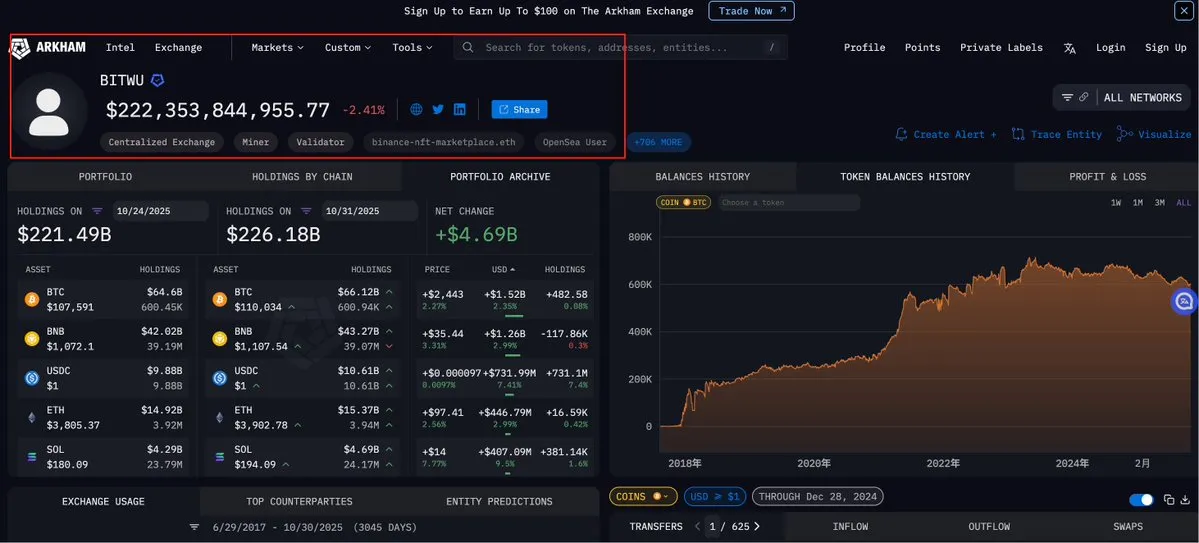Let's talk about $MSTR's financial report - Q3 2025
To begin with, MSTR's financial report was released after the U.S. stock market closed on Thursday, showing earnings per share of $8.42, exceeding market expectations of $7.90. The revenue for the third quarter was $128.7 million, while the market expected $118.3 million. MSTR's Q3 financial report surpassed market expectations, and the after-hours price rose by over 5%.
As of October 26, 2025, MSTR holds a total of 640,808 $BTC, with a total cost of $4.744 billion, translating to a cost of $74,032 per Bitcoin. The current BTC price is $107,300, resulting in a paper profit of $21.333 billion. The net profit (paper) for the third quarter is $2.8 billion.
What does this mean?
American Express, which is in the S&P 500 and ranks 67th globally in terms of assets, reported a profit of $2.9 billion in Q3 2025. Another well-known tech company, Oracle, had a GAAP net profit of $2.9 billion in the third quarter.
This does not imply that MSTR is particularly impressive; MSTR received a B- junk stock rating in the latest S&P ratings, primarily due to the high volatility of Bitcoin prices. Therefore, I believe that S&P's rating for MSTR essentially reflects the rating for BTC, with MSTR potentially rated one or two levels higher simply because it has no leverage.
Thus, MSTR's net profit (paper) has essentially met the standards of the top 100 companies globally, mainly due to the price of BTC.
Crisis?
As of September 30, 2025, MSTR holds $54.3 million in cash and cash equivalents. Does this mean it can only buy $54.3 million worth of Bitcoin?
Not necessarily. MSTR does not rely on cash to buy BTC; it uses its capital structure to acquire BTC by issuing stocks, bonds, and structured credit to convert fiat currency into BTC.
In fact, the Q3 2025 financial report indicates that as of October 26, 2025, MSTR has a remaining issuance capacity of approximately $42.1 billion through various ATM programs. In simple terms, MSTR can buy up to $42.1 billion worth of Bitcoin.
So why did MSTR slow down its BTC purchases in Q3?
MSTR divided its Common Stock ATM Program (with a remaining capacity of about $15.9 billion) into three tiers, determining the issuance intensity and purpose based on the mNAV level:
A. mNAV threshold < 2.5x Tactical issuance
(1) Pay debt interest
(2) Fund preferred stock dividends
(3) Other favorable company situations (such as small cash supplements).
The issuance scale is limited to avoid excessive dilution at low premiums.
B. mNAV threshold 2.5x - 4.0x Opportunistic issuance, mainly for purchasing Bitcoin. Depending on market opportunities, balancing financing with BTC yield.
C. mNAV threshold > 4.0x Active issuance for large-scale Bitcoin purchases. Accelerate at high premiums to maximize leverage.
Currently, mNAV is 1.27x (below 2.5x), so MSTR may only use it for debt/dividend payments rather than aggressively buying BTC. This explains the slowdown in purchases in Q3 (only $2.2 billion).
What is the formula for calculating mNAV?
MSTR's mNAV is the enterprise value (EV) divided by the net asset value (NAV) of the Bitcoin holdings.
Enterprise Value (EV): The total value of the company, including market capitalization + debt + nominal value of preferred stock - cash.
Bitcoin NAV: The market value of the Bitcoin held by the company (currently about 640,000 BTC, worth over $7 billion).
Is MSTR at risk of a collapse?
Short-term (2026) probability is low: Unless BTC crashes by over 50%, the company has $42.1 billion in ATM capacity for quick financing, and operating cash flow is stable.
Long-term (2028) probability is moderate: If BTC remains low for an extended period, there will be significant pressure from maturing debt (the first large amount is due in 2028). Statistics indicate that unless $BTC falls below $16,500, the risk of bankruptcy is highest.
In fact, the price of BTC is not the main reason MSTR might go bankrupt. If MSTR were to face bankruptcy, the core reason would likely be that MSTR could no longer continue to issue stock to exchange for BTC. As long as the market continues to recognize MSTR's approach and provides financing channels, the probability of MSTR going bankrupt will remain low.
When is MSTR the safest?
BTC is in a fluctuating upward cycle
Improvement in Federal Reserve liquidity or expectations of interest rate cuts
The capital market is willing to purchase BTC exposure
U.S. regulation shows increased recognition of BTC
mNAV > 2.5, allowing the company to continue strengthening its balance sheet
Non-debt repayment period
From my personal perspective, there is no need to consider debt repayment before 2028. In other words, the price of BTC before 2028 is unlikely to lead to a collapse, and 2028 marks the beginning of a new major cycle, coinciding with the U.S. elections and potentially a period of low interest rates, with a high likelihood of increased liquidity compared to the current situation.
Therefore, I believe that the debt in 2028 is not a problem, and the price of BTC should not be an issue either. As the only Bitcoin asset in the U.S. stock market, MSTR has a relatively low probability of collapsing in the recent cycle.
PS: MSTR utilizes market confidence → raises BTC → enhances mNAV → improves financing ability → buys BTC in a cyclical manner. This is a Soros-style reflexivity model, not an asset collateral model.
This article is sponsored by #Bitget | @Bitget_zh
免责声明:本文章仅代表作者个人观点,不代表本平台的立场和观点。本文章仅供信息分享,不构成对任何人的任何投资建议。用户与作者之间的任何争议,与本平台无关。如网页中刊载的文章或图片涉及侵权,请提供相关的权利证明和身份证明发送邮件到support@aicoin.com,本平台相关工作人员将会进行核查。




